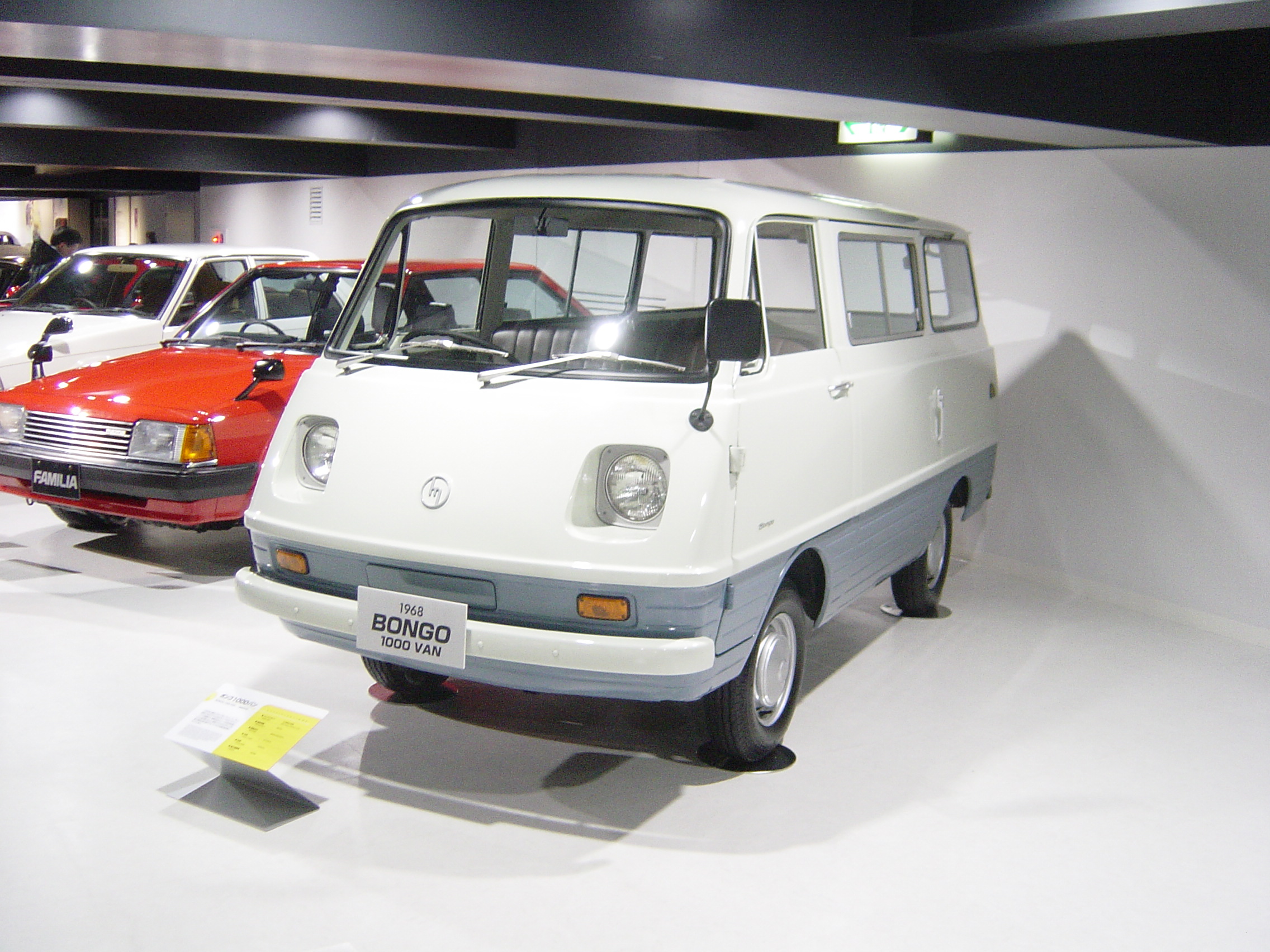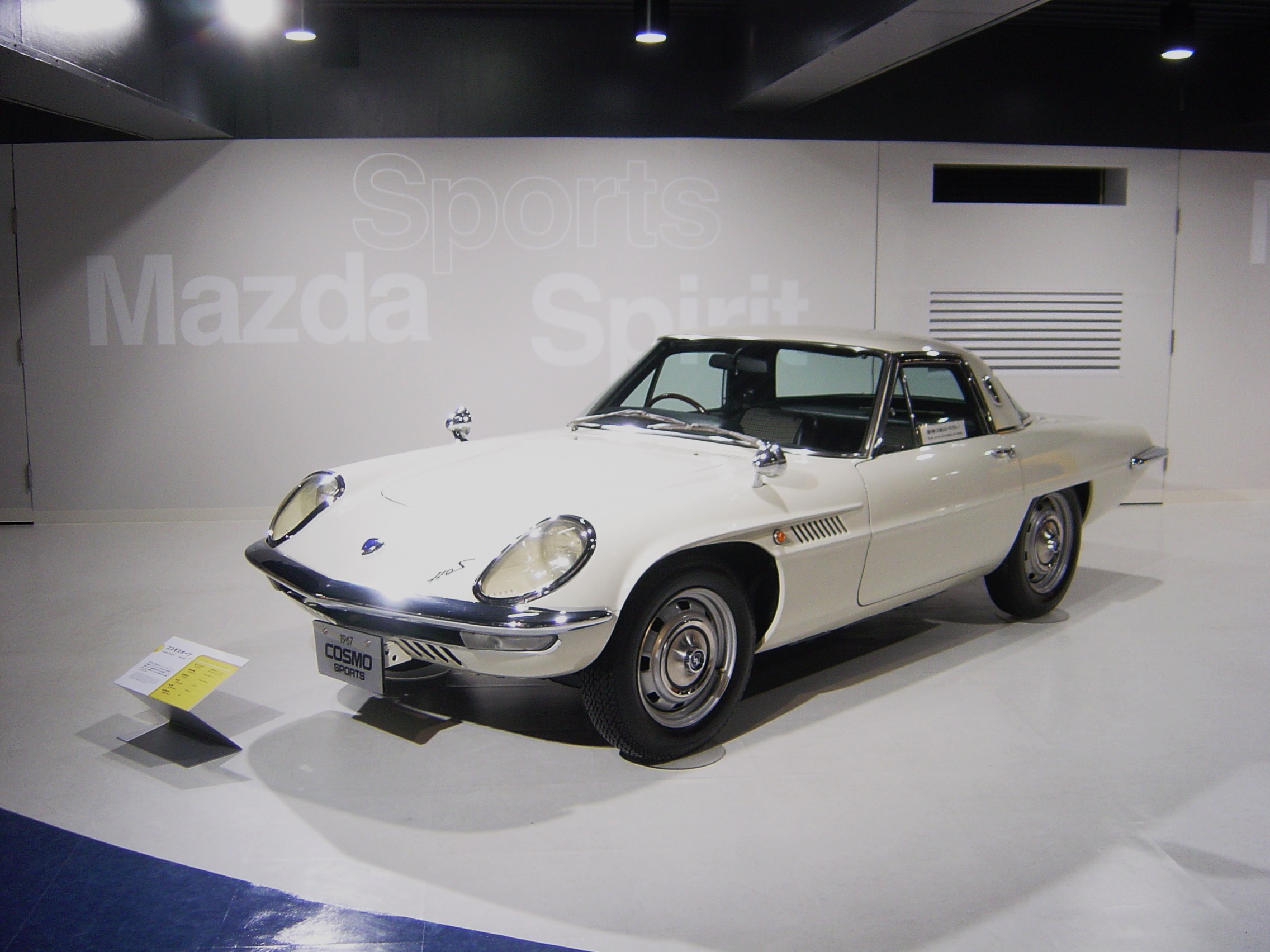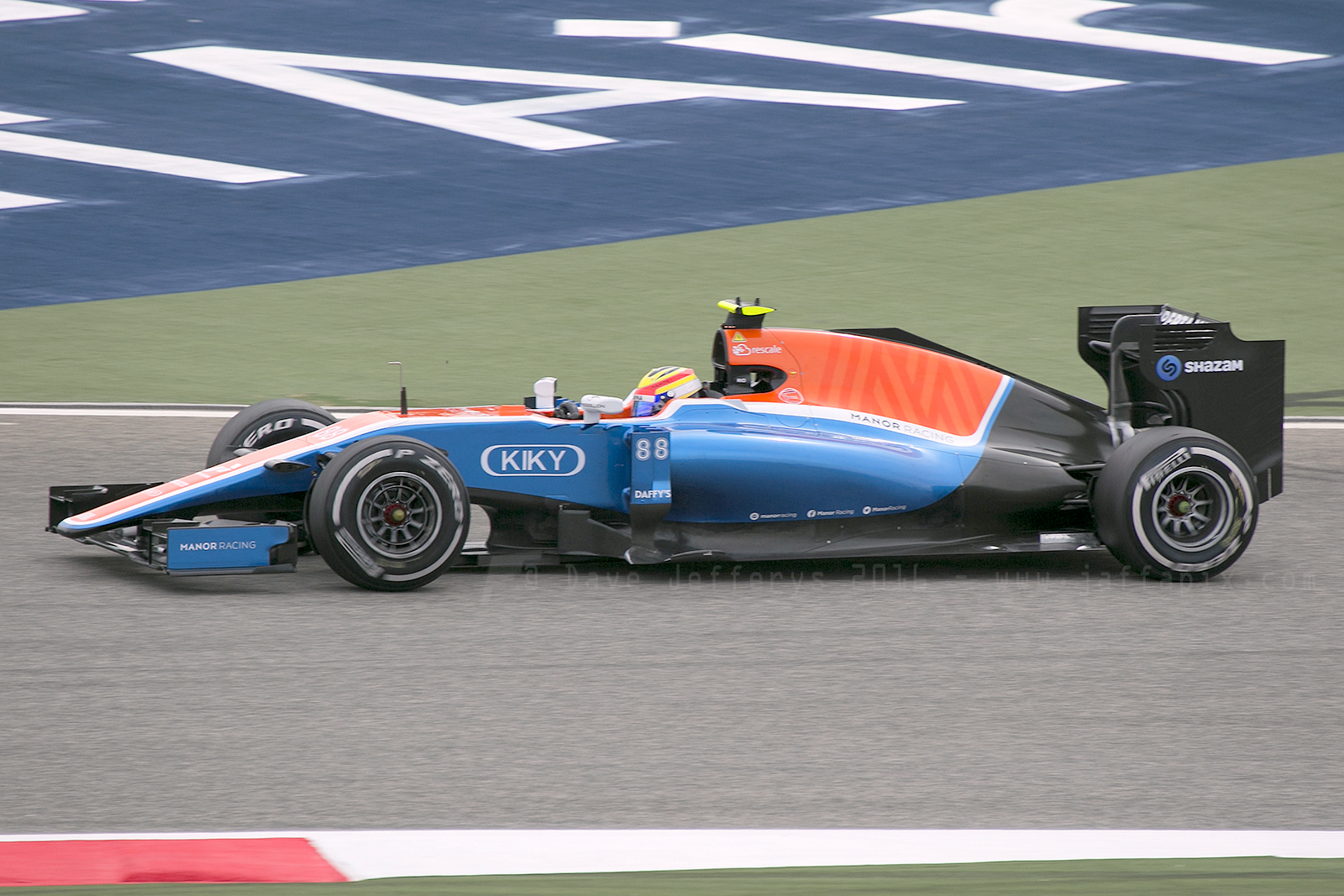|
Mazda Bongo
The , also known as Mazda E-Series, Eunos Cargo, and the Ford Econovan, is a cabover van and pickup truck manufactured by the Japanese automobile manufacturer Mazda since 1966. The Bongo name was also used for the #Friendee, Bongo Friendee, which is not a cabover design. It has been built with rear-, middle-, as well as front-mounted engines. It also formed the basis for the long-running Kia Bongo range. It is named for the African Bongo (antelope), Bongo, a type of antelope. __TOC__ First generation (1966–1975) Mazda first introduced its compact van, small van, the Bongo, in May 1966. It featured a rear-mounted 782 cc water-cooled Overhead valve engine, OHV SA 4-stroke engine rear wheel drive, driving the rear wheels. The rear-engined Bongo was produced in two versions from 1968, as the F800 was joined by the bigger-engined F1000. This has a 987 cc Mazda OHV engine#PB, PB overhead valve inline-four engine with at 5500 rpm. The chassis code for the 1-litre ... [...More Info...] [...Related Items...] OR: [Wikipedia] [Google] [Baidu] [Amazon] |
Mazda
is a Japanese Multinational corporation, multinational automotive manufacturer headquartered in Fuchū, Hiroshima (town), Fuchū, Hiroshima Prefecture, Hiroshima, Japan. The company was founded on January 30, 1920, as Toyo Cork Kogyo Co., Ltd., a cork-making factory, by Jujiro Matsuda. The company then acquired Abemaki Tree Cork Company. It changed its name to Toyo Kogyo Co., Ltd. in 1927 and started producing vehicles in 1931. Mazda is known for its innovative technologies, such as the Wankel engine, the SkyActiv platform, and the Kodo Design language. It also has a long history of motorsport involvement, winning the 24 Hours of Le Mans in 1991 with the rotary-powered Mazda 787B. In the past and present, Mazda has been engaged in alliances with other automakers. From 1974 until the late 2000s, Ford Motor Company, Ford was a major shareholder of Mazda. Other partnerships include Toyota, Nissan, Isuzu, Suzuki and Kia. In 2023, it produced 1.1 million vehicles globally. The ... [...More Info...] [...Related Items...] OR: [Wikipedia] [Google] [Baidu] [Amazon] |
Shah Alam
Shah Alam (, from Persian language, Persian, meaning "king of the world") is a city and the state capital of Selangor, Malaysia which is situated within the Petaling District and a small portion of the neighbouring Klang District. Shah Alam replaced Kuala Lumpur as the capital city of the state of Selangor in 1978 due to Kuala Lumpur's incorporation into a Federal Territory (Malaysia), Federal Territory in 1974. Shah Alam was the first List of planned cities, planned city in Malaysia after Independence Day (Malaysia), independence from Britain in 1957. History Malaysia grew rapidly after its independence in 1957 under its second Prime Minister of Malaysia, Prime Minister, Allahyarham Tun Abdul Razak, Tun Abdul Razak Hussein. Shah Alam was once known as Sungai Renggam and was noted for its rubber and oil palm estates. Later, the same area was identified as Batu Tiga prior to Malaysian independence, and has been a centre of rubber and palm oil trade for centuries. The Sungai Reng ... [...More Info...] [...Related Items...] OR: [Wikipedia] [Google] [Baidu] [Amazon] |
Pickup Truck
A pickup truck or pickup is a Truck_classification#Table_of_US_GVWR_classifications, light or medium duty truck that has an enclosed cabin (truck), cabin, and a back end made up of a cargo bed that is enclosed by three low walls with no roof (this cargo bed back end sometimes consists of a wikt: tailgate, tailgate and removable covering). In Australia and New Zealand, both pickups and coupé utility, coupé utilities are called ute (vehicle), utes, short for utility vehicle. In South Africa, people of all language groups use the term ''bakkie''; a diminutive of , meaning ''bowl'' or ''container''. Once a work or farming tool with few creature comforts, in the 1950s, American consumers began purchasing pickups for lifestyle reasons, and by the 1990s, less than 15 percent of owners reported use in work as the pickup truck's primary purpose. In North America, the pickup is mostly used as a Car, passenger car and accounts for about 18% of total vehicles sold in the United States. Ful ... [...More Info...] [...Related Items...] OR: [Wikipedia] [Google] [Baidu] [Amazon] |
Cabover
Cab-over, also known as cab over engine (COE), cab forward or flat face (U.S.), flat nose (Canada), or forward control (UK), is a body style of truck, bus, or van that has a vertical front, "flat face" or a semi-hood, with the cab of the truck sitting above (or forward of) the front axle. This contrasts with a conventional truck where the engine is mounted in front of the driver. This truck configuration is currently common among European and Asian truck manufacturers. European regulations set restrictions for both the total length and the length of the load area, which allow a cab length of in combination with the maximum load area length. This allows a sleeper cab with a narrow bunk, or a bonneted (hooded) day cab. Nonetheless, no manufacturer in Europe produces such day cabs with bonnets. The last manufacturer of a conventional truck in Europe, Scania, stopped production in 2005 due to a decline in sales to less than 1000 units worldwide, with European sales declin ... [...More Info...] [...Related Items...] OR: [Wikipedia] [Google] [Baidu] [Amazon] |
Kia Bongo
The Kia Bongo (Hangul:기아 봉고), also known as the Kia K-Series or Kia Besta, is a cabover pickup truck and van produced by the South Korean automobile manufacturer Kia since 1980. The Bongo was first launched in 1980 under the name ''Bongo''. In 1997, the third generation Bongo Frontier was launched. As of 2004, the Kia Bongo was in its fourth version, confusingly sold as the Kia Bongo III. "Frontier" was dropped from the name with this revision. Background Kia Motors, Kia has produced small and large trucks for the South Korean market for at least 25 years. Rear-wheel-drive Bongo trucks have been on the market in Korea since at least the late 1980s, and these were equipped with a four-cylinder diesel engine. They have occasionally been sold with various surnames such as Kia Bongo Frontier (third generation Bongo), which was replaced by the Kia Bongo III in 2004, and under a variety of names in different export markets. The Bongo Frontier was one of the first Kia cars to ... [...More Info...] [...Related Items...] OR: [Wikipedia] [Google] [Baidu] [Amazon] |
Mid-engine Design
In automotive engineering, a mid-engine layout describes the placement of an automobile engine in front of the rear-wheel axles, but behind the front axle. History The mid-engine, rear-wheel-drive format can be considered the original layout of automobiles. A 1901 Autocar was the first gasoline-powered automobile to use a drive shaft and placed the engine under the seat. This pioneering vehicle is now in the collection of the Smithsonian Institution. Benefits Mounting the engine in the middle instead of the front of the vehicle puts more weight over the rear tires, so they have more traction and provide more assistance to the front tires in braking the vehicle, with less chance of rear-wheel lockup and less chance of a skid or spin out. If the mid-engine vehicle is also rear-drive the added weight on the rear tires can also improve acceleration on slippery surfaces, providing much of the benefit of all-wheel-drive without the added weight and expense of all-wheel-drive com ... [...More Info...] [...Related Items...] OR: [Wikipedia] [Google] [Baidu] [Amazon] |
Front Mid-engine, Rear-wheel Drive Layout
A front-engine, rear-wheel-drive layout (FR), also called Système Panhard is a powertrain layout with an engine in front and rear-wheel-drive, connected via a drive shaft. This arrangement, with the engine straddling the front axle, was the traditional automobile layout for most of the pre-1950s automotive mechanical projects. It is also used in trucks, pickups, and high-floor buses and school buses. Front mid-engine, rear-wheel-drive layout A front mid-engine, rear-wheel-drive layout (FMR) places the engine in the front half of the vehicle but ''behind'' the front axle, which likewise drives the rear wheels via a driveshaft. Shifting the engine's center of mass rearward aids in front/rear weight distribution and reduces the moment of inertia, both of which improve a vehicle's handling. FMR cars are often characterized by a long hood and front wheels that are pushed forward to the corners of the vehicle, close to the front bumper. 2+2-style grand tourers often have FMR lay ... [...More Info...] [...Related Items...] OR: [Wikipedia] [Google] [Baidu] [Amazon] |
Rear-engine, Rear-wheel-drive
In automotive design, an RR, or rear-engine, rear-wheel-drive layout places both the engine and drive wheels at the rear of the vehicle. In contrast to the RMR layout, the center of mass of the engine is between the rear axle and the rear bumper. Although very common in transit buses and coaches due to the elimination of the drive shaft with low-floor buses, this layout has become increasingly rare in passenger cars. Overview Most of the traits of the RR configuration are shared with the mid-engine rear-wheel-drive, or MR. Placing the engine near the driven rear wheels allows for a physically smaller, lighter, less complex, and more efficient drivetrain, since there is no need for a driveshaft, and the differential can be integrated with the transmission, commonly referred to as a transaxle. The front-engine front-wheel-drive layout also has this advantage. Since the engine is typically the heaviest component of the car, putting it near the rear axle usually results in mor ... [...More Info...] [...Related Items...] OR: [Wikipedia] [Google] [Baidu] [Amazon] |
Pickup Truck
A pickup truck or pickup is a Truck_classification#Table_of_US_GVWR_classifications, light or medium duty truck that has an enclosed cabin (truck), cabin, and a back end made up of a cargo bed that is enclosed by three low walls with no roof (this cargo bed back end sometimes consists of a wikt: tailgate, tailgate and removable covering). In Australia and New Zealand, both pickups and coupé utility, coupé utilities are called ute (vehicle), utes, short for utility vehicle. In South Africa, people of all language groups use the term ''bakkie''; a diminutive of , meaning ''bowl'' or ''container''. Once a work or farming tool with few creature comforts, in the 1950s, American consumers began purchasing pickups for lifestyle reasons, and by the 1990s, less than 15 percent of owners reported use in work as the pickup truck's primary purpose. In North America, the pickup is mostly used as a Car, passenger car and accounts for about 18% of total vehicles sold in the United States. Ful ... [...More Info...] [...Related Items...] OR: [Wikipedia] [Google] [Baidu] [Amazon] |
Light Commercial Vehicle
A light commercial vehicle (LCV) in the European Union, Australia and New Zealand is a commercial carrier vehicle with a gross vehicle weight of no more than 3.5 metric tons (tonnes). The LCV designation is also occasionally used in both Canada and Ireland (where the term ''commercial van'' is more commonly used). In the UK, light haulage is a restricted-weight delivery service where the maximum permitted gross vehicle weight rating without the need of an operator's license is also up to 3.5 tonnes. Usually light haulage excludes a distribution center as the majority of deliveries are direct. A delivery may consist of a single, multiple or priority urgent load and can be either same day or next day delivery. The vehicle (as long as it doesn't exceed the 3.5 T gross vehicle weight) does not require a tachograph and can also be driven by people with a regular car license without the need for an Operator's License. The speed restriction is higher than heavy goods vehicle ... [...More Info...] [...Related Items...] OR: [Wikipedia] [Google] [Baidu] [Amazon] |
Willowvale Mazda Motor Industries
Willow Vale or Willowvale may refer to: * Willow Vale, New South Wales (Kiama), Australia * Willow Vale, New South Wales (Wingecarribee), Australia * Willow Vale, Queensland, Australia * Willow Vale Township, Bottineau County, North Dakota, United States * Willowvale, Queensland, Australia * Willowvale, South Africa * Willowvale, Harare Willowvale is an industrial suburb in the South West of Harare, Zimbabwe. The area was a popular suburb for working class Southern European immigrants in the post war era but today is home to mostly black Zimbabweans and the descendants of Malawi ..., Zimbabwe See also * Willowdale (other) {{Disambig ... [...More Info...] [...Related Items...] OR: [Wikipedia] [Google] [Baidu] [Amazon] |
Willowvale, Harare
Willowvale is an industrial suburb in the South West of Harare, Zimbabwe. The area was a popular suburb for working class Southern European immigrants in the post war era but today is home to mostly black Zimbabweans and the descendants of Malawian, Mozambiquean and Zambian immigrants. Industry Willowvale is home to numerous manufacturing businesses, notably in food production, vehicles, textiles and electronics. However, the suburb is best known as home of the city's Tobacco Auction Floors, located on Gleneagles Rd, and the world's largest tobacco auction. The floors are open to visitors with auctions and trading activity being the highlight of a visit. Willowgate Willowvale gave its name to the 1988-89 "Willowgate" scandal, in which government officials were using their positions to purchase foreign automobiles from a Willowvale car company and then reselling them at high profits. The sales were exposed by ''Chronicle'' editors Geoffrey Nyarota and Davison Maruziva in a seri ... [...More Info...] [...Related Items...] OR: [Wikipedia] [Google] [Baidu] [Amazon] |









